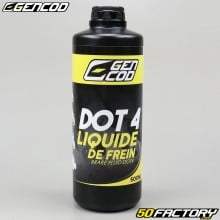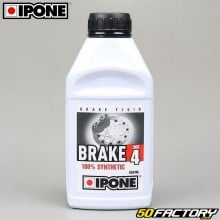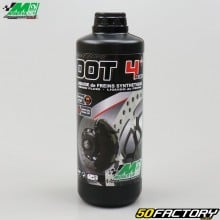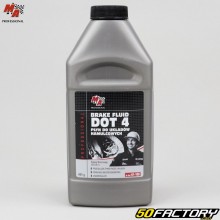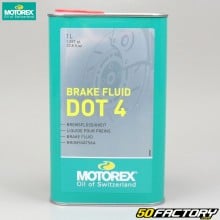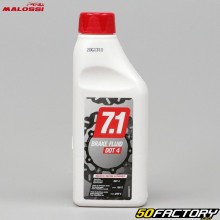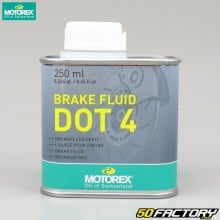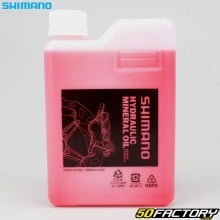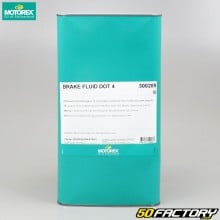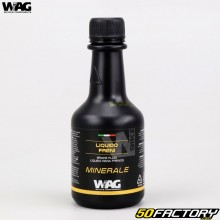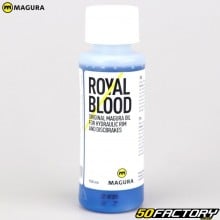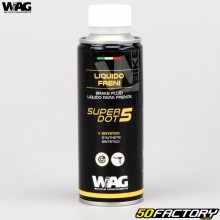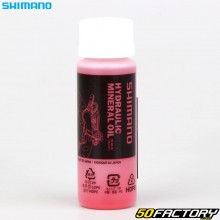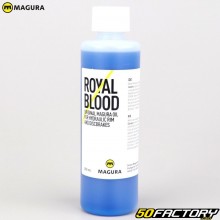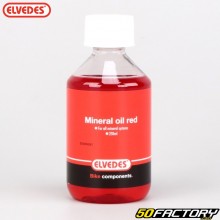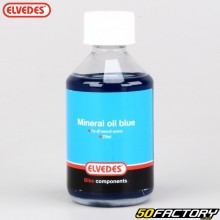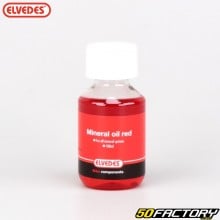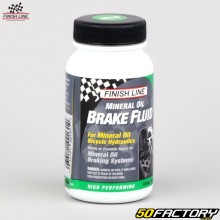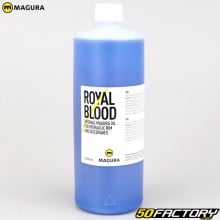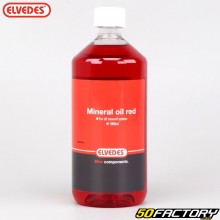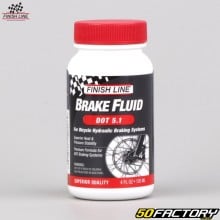 Brake fluid
Brake fluid
 Brake fluid
Brake fluid
- IN STOCK5€90
- IN STOCK11€00
- IN STOCK9€00
- IN STOCK6€90
- IN STOCK10€40
- IN STOCK5€50
- IN STOCK17€00
- STOCK EXHAUSTED9€10
- IN STOCK9€30
- IN STOCK21€10
- STOCK EXHAUSTED10€10
- IN STOCK68€30
- IN STOCK9€00
- IN STOCK9€70
- IN STOCK7€60
- STOCK EXHAUSTED7€60
- IN STOCK8€30
- IN STOCK17€90
- IN STOCK12€30
- IN STOCK12€30
- IN STOCK7€10
- IN STOCK10€70
- IN STOCK34€60
- IN STOCK13€50
- IN STOCK36€50
- IN STOCK45€20
-
- IN STOCK13€90
- IN STOCK10€70
-
- IN STOCK8€30
Understanding the role of brake fluid in gravel and cyclocross
Importance of brake fluid
Brake fluid is a vital component of your bike's hydraulic braking system. It transmits the force exerted on the brake levers to the calipers, allowing the pads to squeeze the discs and slow or stop the bike. Quality brake fluid ensures a fast and efficient response, even in extreme conditions. Understanding its role and how it works is crucial to ensure optimal braking performance in gravel and cyclo disciplines.cross, which puts a lot of strain on the brakes.
Interaction with the braking system
Brake fluid acts like a hydraulic fluid, converting mechanical pressure into force brake fluid. It must be able to withstand high temperatures without vaporizing, and maintain a stable viscosity to ensure consistent performance. In addition, it must be compatible with the materials of the brake system components to prevent corrosion and premature wear. Choosing the right brake fluid also means extending the life of your brake system.
Impact on braking performance
The right brake fluid ensures optimum braking performance. It ensures precise and rapid brake response, essential for controlling the speed of your bike on technical descents or during tight turns typical of cyclo-cross.cross. On the contrary, an unsuitable fluid can generate a spongy braking sensation and reduce the responsiveness of your bike, thus compromising your safety and performance.
Types of brake fluid for gravel and cyclocross
Mineral brake fluid
Mineral brake fluid is often used par well-known brands like Shimano and Tektro. This type of fluid is non-corrosive and less hygroscopic (does not retain water) than DOT fluids, which reduces the risk of internal corrosion. It does have a slightly lower boiling point, but is generally sufficient to meet the braking needs of gravel and cyclo bikes.cross, even during intense races.
DOT Brake Fluid
DOT brake fluids, including DOT 4 and DOT 5.1, are commonly used in bicycle brake systems. They have a higher boiling point than mineral fluids and are therefore more suitable for heavy braking conditions and very hot environments. However, these fluids are hygroscopic, meaning they absorb moisture, requiring more frequent maintenance to avoid performance degradation and prevent brake failure.
Comparison between mineral fluid and DOT
Choosing between mineral brake fluid and DOT fluid depends on several factors, including the type of braking, environmental conditions, and personal preference. Mineral fluids are less corrosive and require less maintenance, while DOT fluids offer better high-temperature performance but require more regular attention. It is crucial to check the compatibility of the fluid with your bike's braking system before making a choice, as using the wrong fluid could damage your braking system and compromise your safety.
How to Choose the Right Brake Fluid
Selection criteria
When choosing the right brake fluid, it is essential to consider several criteria. The thermal performance of the fluid, its compatibility with the components of your braking system, and the required maintenance frequency are important aspects to evaluate. In addition, it is advisable to follow the recommendations of the manufacturer of your bike or your braking system. It is also recommended to take into account the type of riding you do (gravel, cyclocross, etc.) and the specific conditions you ride in, such as climate or terrain type.
Compatibility with the braking system
Brake fluid compatibility with your gravel or moped braking systemcross is essential. Using the wrong fluid can lead to performance issues and even damage to your brake components. Always check your bike's manual or manufacturer's specifications to ensure you choose the right fluid. Finally, remember that your braking efficiency also depends on other factors, such as the condition of your brake pads and rotors.
Additional considerations
It is also important to note that the choice of brake fluid may vary depending on the frequency and intensity of your gravel or cyclo bike use.cross. Par example, if you cyclecross For racing, a DOT brake fluid with a higher boiling point may be preferable. However, for more recreational or less intense use, a mineral fluid may be sufficient. Also, remember to consider the environment in which you usually ride, such asar Weather conditions can affect brake fluid performance.
Brake Maintenance and Bleeding
Signs that maintenance is needed
It’s crucial to watch for signs that brake service is needed. These signs include decreased stopping power, a spongy feeling in the brake levers, or unusual noises when braking. If you notice any of these symptoms, it’s time to check and possibly bleed your brake system. Regular maintenance helps prevent future problems and ensures optimal brake system performance.
Brake Bleeding Procedure
Brake bleeding is an essential operation to maintain the effectiveness of the braking system. Here is a general procedure for bleeding hydraulic brakes:
- Prepare all the necessary tools: syringe, bleeder hose, bleeder wrench, and new brake fluid.
- Secure the bike securely and remove the wheels if necessary.
- Open the master cylinder and attach the syringe filled with new brake fluid to the bleed point on the caliper.
- Open the bleeder screw and slowly inject the new fluid while watching for air and old fluid to escape.
- Close the bleeder screw as soon as new fluid begins to flow without air bubbles.
- Check the fluid level in the master cylinder and close it once the correct level is reached.
- Test the brake system to ensure proper operation before reinstalling the wheels.
It should be noted that bleeding the brakes must be done carefully. Improper maintenance can cause performance problems and damage the brake system components. Be sure to follow the manufacturer's instructions and observe safety precautions.





































